My
List |
Addition Date
|
Target
|
Mission
|
Instrument
|
Size
|

|
2005-05-31 |
GJ 3685A
|
Galaxy Evolution Explorer (GALEX)
|
GALEX Telescope
|
1280x960x3 |
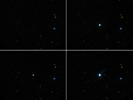
|
-
PIA07249:
-
Dwarf Star Erupts in Giant Flare

Full Resolution:
TIFF
(3.69 MB)
JPEG
(102 kB)
|

|
2005-05-30 |
Carina Nebula
|
Spitzer Space Telescope
|
IRAC
|
6614x5196x3 |

|
-
PIA03515:
-
All Pillars Point to Eta

Full Resolution:
TIFF
(103.1 MB)
JPEG
(3.749 MB)
|

|
2005-05-05 |
IC 1613
|
Galaxy Evolution Explorer (GALEX)
|
GALEX Telescope
|
2032x1016x3 |

|
-
PIA07911:
-
Irregular Dwarf Galaxy IC 1613
Full Resolution:
TIFF
(6.202 MB)
JPEG
(243.7 kB)
|

|
2005-05-05 |
NGC 5128
|
Galaxy Evolution Explorer (GALEX)
|
GALEX Telescope
|
1279x1279x3 |
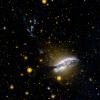
|
-
PIA07912:
-
NGC 5128 (Centaurus-A)
Full Resolution:
TIFF
(4.913 MB)
JPEG
(173.9 kB)
|

|
2005-05-05 |
NGC 1291
|
Galaxy Evolution Explorer (GALEX)
|
GALEX Telescope
|
1412x706x3 |
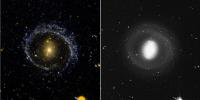
|
-
PIA07910:
-
Barred Ring Galaxy NGC 1291
Full Resolution:
TIFF
(2.996 MB)
JPEG
(121.6 kB)
|

|
2005-05-05 |
NGC 335
|
Galaxy Evolution Explorer (GALEX)
|
GALEX Telescope
|
1216x608x3 |
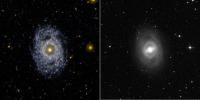
|
-
PIA07909:
-
Face on Barred and Ringed Spiral Galaxy NGC 3351
Full Resolution:
TIFF
(2.221 MB)
JPEG
(89.44 kB)
|

|
2005-05-05 |
NGC 3190
|
Galaxy Evolution Explorer (GALEX)
|
GALEX Telescope
|
936x936x3 |
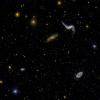
|
-
PIA07907:
-
Diverse Group of Galaxy Types, NGC 3190 Field
Full Resolution:
TIFF
(2.632 MB)
JPEG
(95.57 kB)
|

|
2005-05-05 |
Virgo Galaxy Cluster
|
Galaxy Evolution Explorer (GALEX)
|
GALEX Telescope
|
2274x2274x3 |
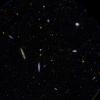
|
-
PIA07906:
-
Virgo Galaxy Cluster
Full Resolution:
TIFF
(15.53 MB)
JPEG
(575.3 kB)
|

|
2005-05-05 |
Stephan's Quintet,NGC 7331
|
Galaxy Evolution Explorer (GALEX)
|
GALEX Telescope
|
1692x1020x3 |
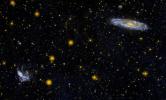
|
-
PIA07905:
-
Interacting Group of Galaxies Known as Stephan's Quintet
Full Resolution:
TIFF
(5.186 MB)
JPEG
(251.1 kB)
|

|
2005-05-05 |
NGC 3344
|
Galaxy Evolution Explorer (GALEX)
|
GALEX Telescope
|
664x664x3 |
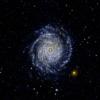
|
-
PIA07904:
-
Large Face on Spiral Galaxy NGC 3344
Full Resolution:
TIFF
(1.324 MB)
JPEG
(53.6 kB)
|

|
2005-05-05 |
M83
|
Galaxy Evolution Explorer (GALEX)
|
GALEX Telescope
|
1245x1245x3 |
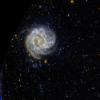
|
-
PIA07903:
-
"Southern Pinwheel" Galaxy M83
Full Resolution:
TIFF
(4.655 MB)
JPEG
(278.3 kB)
|

|
2005-05-05 |
NGC 1365
|
Galaxy Evolution Explorer (GALEX)
|
GALEX Telescope
|
664x664x3 |

|
-
PIA07901:
-
Barred Spiral Galaxy NGC 1365
Full Resolution:
TIFF
(1.324 MB)
JPEG
(52.1 kB)
|

|
2005-05-05 |
NGS 1097
|
Galaxy Evolution Explorer (GALEX)
|
GALEX Telescope
|
656x656x3 |
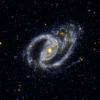
|
-
PIA07900:
-
A Barred Spiral
Galaxy, and the Small Elliptical Companion Galaxy NGC 1097A
Full Resolution:
TIFF
(1.293 MB)
JPEG
(61.52 kB)
|

|
2005-05-05 |
|
Hubble Space Telescope
|
Visible Light
|
3000x1681x3 |
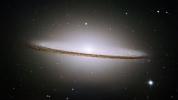
|
-
PIA15226:
-
Hubble Spies Spectacular Sombrero
Full Resolution:
TIFF
(15.13 MB)
JPEG
(427.2 kB)
|

|
2005-05-04 |
Messier 104
|
Hubble Space Telescope
Spitzer Space Telescope
|
IRAC
Visible Light
|
3000x1681x3 |
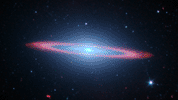
|
-
PIA07899:
-
Spitzer Spies Spectacular Sombrero

Full Resolution:
TIFF
(15.13 MB)
JPEG
(214.2 kB)
|

|
2005-04-20 |
HD 69830
|
Spitzer Space Telescope
|
|
3200x2400x3 |
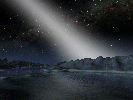
|
-
PIA07853:
-
Alien Asteroid Belt Compared to our Own (Artist Concept)

Full Resolution:
TIFF
(23.04 MB)
JPEG
(451.6 kB)
|

|
2005-04-11 |
NGC 300
|
Galaxy Evolution Explorer (GALEX)
|
Ultraviolet/Visible Camera
|
1273x967x3 |
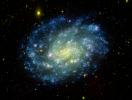
|
-
PIA07828:
-
Classic Galaxy with Glamour
Full Resolution:
TIFF
(2.546 MB)
JPEG
(148.3 kB)
|

|
2005-03-01 |
|
Spitzer Space Telescope
|
|
3000x2400x3 |
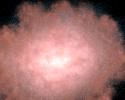
|
-
PIA07396:
-
Invisible Galaxies Come to Life! (Artist Concept)

Full Resolution:
TIFF
(18.75 MB)
JPEG
(578.1 kB)
|

|
2005-03-01 |
|
Spitzer Space Telescope
|
Infrared Spectrograph (IRS)
|
2647x1958x3 |
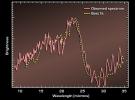
|
-
PIA07395:
-
Fingerprints in the Light
Full Resolution:
TIFF
(3.413 MB)
JPEG
(283.3 kB)
|

|
2004-12-22 |
|
Galaxy Evolution Explorer (GALEX)
|
GALEX Telescope
|
587x473x3 |
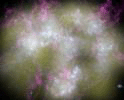
|
-
PIA07144:
-
Fires of Galactic Youth (Artist Animation)

Full Resolution:
TIFF
(834.1 kB)
JPEG
(35.86 kB)
|

|
2004-12-21 |
|
Galaxy Evolution Explorer (GALEX)
|
GALEX Telescope
|
1793x1194x3 |
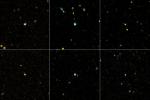
|
-
PIA07143:
-
Nearby Newborns
Full Resolution:
TIFF
(1.313 MB)
JPEG
(194 kB)
|

|
2004-12-21 |
|
Galaxy Evolution Explorer (GALEX)
|
GALEX Telescope
|
2496x1386x3 |
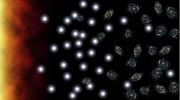
|
-
PIA07142:
-
Baby Galaxies in the Adult Universe
Full Resolution:
TIFF
(5.796 MB)
JPEG
(183.5 kB)
|

|
2004-10-12 |
|
Spitzer Space Telescope
|
IRAC
|
602x602x3 |
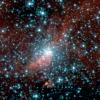
|
-
PIA06928:
-
Spitzer Digs Up Galactic Fossil
Full Resolution:
TIFF
(1.089 MB)
JPEG
(63.25 kB)
|

|
2004-10-06 |
|
Hubble Space Telescope
Spitzer Space Telescope
|
Chandra X-ray Telescope
Hubble Space Telescope
Spitzer Space Telescope
|
750x750x3 |
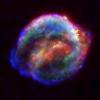
|
-
PIA06907:
-
Three Great Eyes on Kepler's Supernova
Remnant
Full Resolution:
TIFF
(1.453 MB)
JPEG
(33.78 kB)
|

|
2004-09-07 |
|
Spitzer Space Telescope
|
IRAC
|
1125x1125x3 |
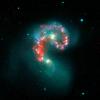
|
-
PIA06854:
-
Fire within the Antennae Galaxies
Full Resolution:
TIFF
(2.308 MB)
JPEG
(76.5 kB)
|

|
2004-09-07 |
|
Spitzer Space Telescope
|
IRAC
|
1125x1125x3 |
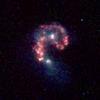
|
-
PIA06853:
-
Life at the Intersection of Colliding Galaxies
Full Resolution:
TIFF
(2.824 MB)
JPEG
(96.35 kB)
|

|
2004-06-28 |
NGC 7331
|
Spitzer Space Telescope
|
IRAC
|
1239x805x3 |
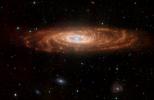
|
-
PIA06322:
-
Morphology of Our Galaxy's 'Twin'
Full Resolution:
TIFF
(2.02 MB)
JPEG
(88.38 kB)
|

|
2004-06-01 |
Centaurus A
|
Spitzer Space Telescope
|
IRAC
|
1627x1227x3 |

|
-
PIA06007:
-
The Making of a Galactic Parallelogram
Full Resolution:
TIFF
(4.383 MB)
JPEG
(149.7 kB)
|

|
2004-05-27 |
RCW 49 Nebula
|
Spitzer Space Telescope
|
IRAC
|
1520x1520x3 |

|
-
PIA05989:
-
Stellar Jewels Shine in New Spitzer Image
Full Resolution:
TIFF
(5.235 MB)
JPEG
(195.4 kB)
|

|
2004-05-24 |
|
Galaxy Evolution Explorer (GALEX)
|
GALEX Telescope
|
3840x3840x3 |
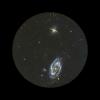
|
-
PIA05979:
-
Happy Anniversary to a Galactic Explorer
Full Resolution:
TIFF
(17.37 MB)
JPEG
(1.266 MB)
|

|
2004-05-11 |
|
Spitzer Space Telescope
|
IRAC
|
708x570x3 |
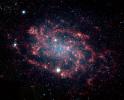
|
-
PIA05879:
-
Dissection of a Galaxy
Full Resolution:
TIFF
(1.009 MB)
JPEG
(75.25 kB)
|

|
2004-04-13 |
|
Spitzer Space Telescope
|
IRAC
|
3652x1936x3 |
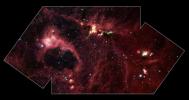
|
-
PIA05732:
-
Nursery of Giants
Full Resolution:
TIFF
(13.19 MB)
JPEG
(548.3 kB)
|

|
2004-04-13 |
|
Spitzer Space Telescope
|
MIPS
|
2499x779x3 |

|
-
PIA05733:
-
Stormy Clouds of Star Birth
Full Resolution:
TIFF
(3.511 MB)
JPEG
(102.2 kB)
|

|
2004-04-13 |
|
Spitzer Space Telescope
|
IRAC
|
3652x1936x3 |

|
-
PIA05734:
-
Spitzer Makes "Invisible" Visible
Full Resolution:
TIFF
(12.89 MB)
JPEG
(935.6 kB)
|

|
2004-04-13 |
|
Spitzer Space Telescope
|
IRAC
Multiband Imaging Photometer (MIPS)
|
3600x2556x3 |
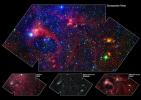
|
-
PIA05735:
-
Star Formation in the DR21 Region (A)
Full Resolution:
TIFF
(17.13 MB)
JPEG
(1.391 MB)
|

|
2004-04-13 |
|
Spitzer Space Telescope
|
IRAC
Multiband Imaging Photometer (MIPS)
|
3588x4224x3 |

|
-
PIA05736:
-
Star Formation in the DR21 Region (B)
Full Resolution:
TIFF
(19.11 MB)
JPEG
(840.7 kB)
|

|
2004-03-08 |
|
Spitzer Space Telescope
|
IRAC
Multiband Imaging Photometer (MIPS)
|
2262x1899x3 |

|
-
PIA05517:
-
Star Formation in Henize 206
Full Resolution:
TIFF
(8.739 MB)
JPEG
(428.1 kB)
|

|
2004-02-12 |
Cepheus
|
Spitzer Space Telescope
|
IRAC
|
1103x1293x3 |

|
-
PIA05266:
-
Spitzer Telescope Sends Rose for Valentine's Day
Full Resolution:
TIFF
(2.124 MB)
JPEG
(88.71 kB)
|

|
2004-02-03 |
|
Hubble Space Telescope
|
WFPC2
|
1065x771x3 |

|
-
PIA05202:
-
Supernova Blast Bonanza in Nearby Galaxy
Full Resolution:
TIFF
(2.467 MB)
JPEG
(177.7 kB)
|

|
2004-01-13 |
Tarantula Nebula
|
Spitzer Space Telescope
|
IRAC
|
1384x908x3 |
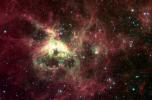
|
-
PIA05062:
-
The Tarantula Nebula
Full Resolution:
TIFF
(3.778 MB)
JPEG
(167.3 kB)
|

|
2003-12-18 |
|
Spitzer Space Telescope
|
Infrared Spectrograph (IRS)
|
2912x2040x3 |
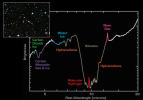
|
-
PIA04941:
-
Spectrum from Faint Galaxy IRAS F00183-7111
Full Resolution:
TIFF
(2.3 MB)
JPEG
(316.7 kB)
|

|
2003-12-18 |
|
Spitzer Space Telescope
|
MIPS
|
1108x2148x3 |

|
-
PIA04938:
-
Long-Wavelength Infrared Views of Messier 81
Full Resolution:
TIFF
(3.404 MB)
JPEG
(164.3 kB)
|

|
2003-12-18 |
|
Spitzer Space Telescope
|
MIPS
IRAC
|
2286x2334x3 |

|
-
PIA04937:
-
Multi-Wavelength Views of Messier 81
Full Resolution:
TIFF
(12.2 MB)
JPEG
(516.4 kB)
|

|
2003-12-18 |
|
Spitzer Space Telescope
|
IRAC
|
1364x1038x3 |
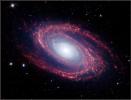
|
-
PIA04936:
-
Short-Wavelength Infrared Views of Messier 81
Full Resolution:
TIFF
(3.273 MB)
JPEG
(139.3 kB)
|

|
2003-12-11 |
|
Galaxy Evolution Explorer (GALEX)
|
GALEX Telescope
|
960x960x3 |
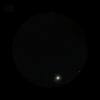
|
-
PIA04926:
-
Globular Cluster Messier 2 in Aquarius
Full Resolution:
TIFF
(756.8 kB)
JPEG
(33.15 kB)
|

|
2003-12-10 |
|
Galaxy Evolution Explorer (GALEX)
|
GALEX Telescope
|
3840x3840x3 |

|
-
PIA04925:
-
Stephan's Quintet and NGC 7331
Full Resolution:
TIFF
(17.31 MB)
JPEG
(1.19 MB)
|

|
2003-12-10 |
|
Galaxy Evolution Explorer (GALEX)
|
GALEX Telescope
|
1500x1500x3 |
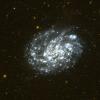
|
-
PIA04924:
-
Galaxy NGC 300
Full Resolution:
TIFF
(6.134 MB)
JPEG
(437.5 kB)
|

|
2003-12-10 |
|
Galaxy Evolution Explorer (GALEX)
|
GALEX Telescope
|
1755x790x3 |

|
-
PIA04923:
-
Galaxy NGC 55
Full Resolution:
TIFF
(3.007 MB)
JPEG
(154.3 kB)
|

|
2003-12-10 |
|
Galaxy Evolution Explorer (GALEX)
|
GALEX Telescope
|
1501x1501x3 |
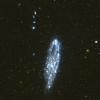
|
-
PIA04922:
-
Galaxy NGC 247
Full Resolution:
TIFF
(5.959 MB)
JPEG
(432.4 kB)
|

|
2003-12-10 |
|
Galaxy Evolution Explorer (GALEX)
|
GALEX Telescope
|
6200x6200x3 |

|
-
PIA04921:
-
Andromeda Galaxy
Full Resolution:
TIFF
(68.05 MB)
JPEG
(4.329 MB)
|

|
2003-07-25 |
|
Galaxy Evolution Explorer (GALEX)
|
GALEX Telescope
|
1008x992x3 |

|
-
PIA04629:
-
Galaxy Messier 83
Full Resolution:
TIFF
(2.944 MB)
JPEG
(194.6 kB)
|

|
2003-07-25 |
|
Galaxy Evolution Explorer (GALEX)
|
GALEX Telescope
|
1017x982x3 |
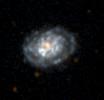
|
-
PIA04635:
-
Galaxy NGC5962
Full Resolution:
TIFF
(1.459 MB)
JPEG
(58.28 kB)
|

|
2003-07-25 |
|
Galaxy Evolution Explorer (GALEX)
|
GALEX Telescope
|
1034x965x3 |

|
-
PIA04634:
-
Galaxy NGC5474
Full Resolution:
TIFF
(1.955 MB)
JPEG
(69.65 kB)
|

|
2003-07-25 |
|
Galaxy Evolution Explorer (GALEX)
|
GALEX Telescope
|
1000x1000x3 |
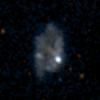
|
-
PIA04633:
-
Galaxy NGC5398
Full Resolution:
TIFF
(1.495 MB)
JPEG
(55.54 kB)
|

|
2003-07-25 |
|
Galaxy Evolution Explorer (GALEX)
|
GALEX Telescope
|
991x1008x3 |

|
-
PIA04632:
-
Messier 101 Single Orbit Exposure
Full Resolution:
TIFF
(1.415 MB)
JPEG
(69.7 kB)
|

|
2003-07-25 |
|
Galaxy Evolution Explorer (GALEX)
|
GALEX Telescope
|
1024x804x1 |
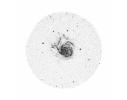
|
-
PIA04631:
-
Messier 101
Full Resolution:
TIFF
(341.8 kB)
JPEG
(104.1 kB)
|

|
2003-07-25 |
|
Galaxy Evolution Explorer (GALEX)
|
GALEX Telescope
|
1771x1401x3 |

|
-
PIA04630:
-
Galaxy M101
Full Resolution:
TIFF
(4.213 MB)
JPEG
(242.3 kB)
|

|
2003-07-25 |
|
Galaxy Evolution Explorer (GALEX)
|
GALEX Telescope
|
996x1003x3 |

|
-
PIA04628:
-
Galaxy Messier 51
Full Resolution:
TIFF
(1.012 MB)
JPEG
(36.55 kB)
|

|
2003-07-25 |
|
Galaxy Evolution Explorer (GALEX)
|
GALEX Telescope
|
770x644x3 |

|
-
PIA04627:
-
Deep Imaging Survey
Full Resolution:
TIFF
(1.282 MB)
JPEG
(112.4 kB)
|

|
2003-07-25 |
|
Galaxy Evolution Explorer (GALEX)
|
GALEX Telescope
|
796x733x3 |

|
-
PIA04626:
-
Groth Deep Locations Image
Full Resolution:
TIFF
(1.188 MB)
JPEG
(93.39 kB)
|

|
2003-07-25 |
|
Galaxy Evolution Explorer (GALEX)
|
GALEX Telescope
|
795x735x3 |
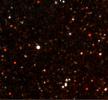
|
-
PIA04625:
-
Groth Deep Image
Full Resolution:
TIFF
(1.143 MB)
JPEG
(66.32 kB)
|

|
2003-07-25 |
|
Galaxy Evolution Explorer (GALEX)
|
GALEX Telescope
|
1600x1496x3 |

|
-
PIA04624:
-
Galaxy Centaurus A
Full Resolution:
TIFF
(7.193 MB)
JPEG
(235.1 kB)
|

|
2003-07-25 |
|
Galaxy Evolution Explorer (GALEX)
|
GALEX Telescope
|
989x1010x3 |

|
-
PIA04623:
-
Galaxy UGC10445
Full Resolution:
TIFF
(1.436 MB)
JPEG
(48.59 kB)
|

|
2003-07-03 |
|
Hubble Space Telescope
|
WFPC2
|
2603x2783x3 |

|
-
PIA04609:
-
Celestial Fireworks
Full Resolution:
TIFF
(13.8 MB)
JPEG
(871.3 kB)
|

|
2003-05-28 |
|
Galaxy Evolution Explorer (GALEX)
|
GALEX Telescope
|
534x528x3 |

|
-
PIA04281:
-
GALEX 1st Light Near and Far Ultraviolet -100
Full Resolution:
TIFF
(390.4 kB)
JPEG
(22.84 kB)
|

|
2003-05-28 |
|
Galaxy Evolution Explorer (GALEX)
|
GALEX Telescope
|
1450x1555x3 |

|
-
PIA04280:
-
GALEX 1st Light Far Ultraviolet
Full Resolution:
TIFF
(1.453 MB)
JPEG
(93.59 kB)
|

|
2003-05-28 |
|
Galaxy Evolution Explorer (GALEX)
|
GALEX Telescope
|
1450x1550x3 |

|
-
PIA04279:
-
GALEX 1st Light Near Ultraviolet
Full Resolution:
TIFF
(2.538 MB)
JPEG
(173.2 kB)
|

|
2003-05-28 |
|
Galaxy Evolution Explorer (GALEX)
|
GALEX Telescope
|
534x528x3 |
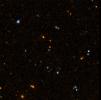
|
-
PIA04278:
-
GALEX 1st Light Near Ultraviolet -50
Full Resolution:
TIFF
(540.4 kB)
JPEG
(33.53 kB)
|

|
2003-05-28 |
|
Galaxy Evolution Explorer (GALEX)
|
GALEX Telescope
|
2112x1533x3 |
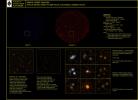
|
-
PIA04282:
-
GALEX 1st Light Compilation
Full Resolution:
TIFF
(2.837 MB)
JPEG
(340.9 kB)
|

|
2003-03-27 |
|
Two Micron All Sky Survey (2MASS)
|
Two Micron All Sky Survey (2MASS)
|
4500x2400x3 |
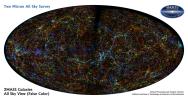
|
-
PIA04252:
-
Extended Source/Galaxy All Sky 1
Full Resolution:
TIFF
(19 MB)
JPEG
(2.299 MB)
|

|
2003-03-27 |
|
Two Micron All Sky Survey (2MASS)
|
Two Micron All Sky Survey (2MASS)
|
4500x2400x3 |
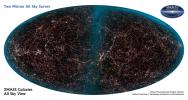
|
-
PIA04251:
-
Extended Source/Galaxy All Sky 2
Full Resolution:
TIFF
(20.06 MB)
JPEG
(1.845 MB)
|

|
2003-03-27 |
|
Two Micron All Sky Survey (2MASS)
|
Two Micron All Sky Survey (2MASS)
|
6782x3540x3 |
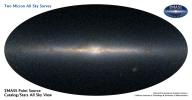
|
-
PIA04250:
-
Point Source All Sky
Full Resolution:
TIFF
(30.1 MB)
JPEG
(3.661 MB)
|

|
2003-03-22 |
|
Spitzer Space Telescope
|
|
2560x1920x3 |
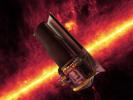
|
-
PIA04267:
-
SST and the Milky Way, an Artist's Concept
Full Resolution:
TIFF
(12.36 MB)
JPEG
(308.7 kB)
|

|
2003-03-19 |
|
Galaxy Evolution Explorer (GALEX)
|
GALEX Telescope
|
3000x1968x3 |

|
-
PIA04264:
-
New Galaxy Quest Readies for Launch
Full Resolution:
TIFF
(17.71 MB)
JPEG
(6.099 MB)
|

|
2002-12-21 |
|
SIM PlanetQuest
|
|
2736x1836x3 |
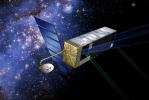
|
-
PIA04248:
-
Artist's concept of SIM PlanetQuest (Artist Concept)
Full Resolution:
TIFF
(15.07 MB)
JPEG
(636 kB)
|

|
2002-12-21 |
|
Galaxy Evolution Explorer (GALEX)
|
|
2907x3614x3 |

|
-
PIA04234:
-
Artist's Concept of Galaxy Evolution Explorer
Full Resolution:
TIFF
(28.62 MB)
JPEG
(653.7 kB)
|

|
1999-12-30 |
Edge-on Galaxy ESO 510 G13
|
Hubble Space Telescope
|
WFPC2
|
1435x732x3 |
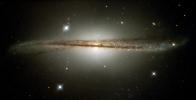
|
-
PIA04213:
-
Edge-on Galaxy
Full Resolution:
TIFF
(2.843 MB)
JPEG
(100.8 kB)
|

|
1999-12-15 |
Galaxy NGC 4013
|
Hubble Space Telescope
|
WFPC2
|
1041x1018x3 |
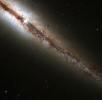
|
-
PIA04217:
-
Galaxy NGC 4013
Full Resolution:
TIFF
(2.811 MB)
JPEG
(74.83 kB)
|

|
1999-12-10 |
Hubble -V
|
Hubble Space Telescope
|
WFPC2
|
640x800x3 |

|
-
PIA04222:
-
Hubble-V
Full Resolution:
TIFF
(1.065 MB)
JPEG
(77.99 kB)
|

|
1999-12-09 |
Antennae or Ring Tail galaxies
|
Two Micron All Sky Survey (2MASS)
|
Two Micron All Sky Survey (2MASS)
|
456x586x3 |

|
-
PIA04205:
-
Antennae
Full Resolution:
TIFF
(674.6 kB)
JPEG
(54.88 kB)
|

|
1999-12-07 |
Galaxy NGC 3310
|
Hubble Space Telescope
|
WFPC2
|
849x933x3 |

|
-
PIA04229:
-
Starburst Galaxy NGC 3310
Full Resolution:
TIFF
(1.858 MB)
JPEG
(102.3 kB)
|

|
1999-12-04 |
Whirlpool Galaxy
|
Hubble Space Telescope
|
WFPC2
|
648x809x3 |

|
-
PIA04230:
-
Whirlpool Galaxy
Full Resolution:
TIFF
(1.575 MB)
JPEG
(84.45 kB)
|

|
1999-12-03 |
N44C nebula
|
Hubble Space Telescope
|
WFPC2
|
1460x1502x3 |

|
-
PIA04225:
-
N44C Nebula
Full Resolution:
TIFF
(6.034 MB)
JPEG
(275.2 kB)
|

|
1999-12-03 |
Galaxy NGC 1850
|
Hubble Space Telescope
|
WFPC2
|
758x580x3 |
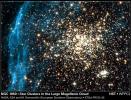
|
-
PIA04221:
-
Galaxy NGC 1850
Full Resolution:
TIFF
(1.321 MB)
JPEG
(140.6 kB)
|

|
1999-12-02 |
Orion Nebula
|
Hubble Space Telescope
|
WFPC2
|
1074x895x3 |
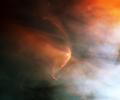
|
-
PIA04227:
-
Orion Nebula and Bow Shock
Full Resolution:
TIFF
(2.805 MB)
JPEG
(61.4 kB)
|

|
1999-12-02 |
Trifid Nebula
|
Two Micron All Sky Survey (2MASS)
|
Two Micron All Sky Survey (2MASS)
|
930x1408x3 |

|
-
PIA04220:
-
Trifid Nebula
Full Resolution:
TIFF
(3.452 MB)
JPEG
(314.9 kB)
|

|
1999-12-02 |
M82 Galaxy
|
Hubble Space Telescope
|
WFPC2
|
1487x1522x3 |

|
-
PIA04218:
-
Galaxy M82
Full Resolution:
TIFF
(5.39 MB)
JPEG
(187.4 kB)
|

|
1999-12-02 |
Coma cluster
|
Two Micron All Sky Survey (2MASS)
|
Two Micron All Sky Survey (2MASS)
|
2106x2249x3 |

|
-
PIA04210:
-
Coma cluster of galaxies
Full Resolution:
TIFF
(11.22 MB)
JPEG
(783.8 kB)
|

|
1999-12-02 |
Galaxy NGC 3079
|
Hubble Space Telescope
|
WFPC2
|
2329x1845x3 |
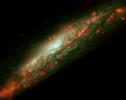
|
-
PIA04209:
-
Galaxy NGC 3079
Full Resolution:
TIFF
(5.519 MB)
JPEG
(351.2 kB)
|

|
1999-12-02 |
Galaxy NGC 3079
|
Hubble Space Telescope
|
WFPC2
|
434x434x3 |
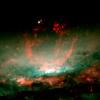
|
-
PIA04208:
-
Galaxy NGC 3079
Full Resolution:
TIFF
(305.3 kB)
JPEG
(22.15 kB)
|

|
1999-12-02 |
Stephan's Quintet,NGC 7319, NGC 7318B, NGC 7318A
|
Hubble Space Telescope
|
WFPC2
|
2400x3000x3 |

|
-
PIA04201:
-
Stephan's Quintet
Full Resolution:
TIFF
(12.15 MB)
JPEG
(521 kB)
|

|
1999-12-01 |
Globular cluster M4
|
Hubble Space Telescope
|
WFPC2
|
1100x1237x3 |

|
-
PIA04231:
-
White Dwarf Stars
Full Resolution:
TIFF
(3.34 MB)
JPEG
(279.1 kB)
|

|
1999-12-01 |
Galaxy NGC 4622
|
Hubble Space Telescope
|
WFPC2
|
853x970x3 |

|
-
PIA04224:
-
Backwards Spiral Galaxy
Full Resolution:
TIFF
(2.485 MB)
JPEG
(97.62 kB)
|

|
1999-12-01 |
Galaxy NGC 1512
|
Hubble Space Telescope
|
WFPC2
Faint Object Camera
Near Infrared Camera
Multi-Object Spectrometer
|
600x650x3 |

|
-
PIA04219:
-
Galaxy NGC 1512
Full Resolution:
TIFF
(972.2 kB)
JPEG
(50.1 kB)
|

|
1999-12-01 |
|
Two Micron All Sky Survey (2MASS)
|
Two Micron All Sky Survey (2MASS)
|
2425x1498x3 |
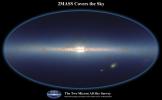
|
-
PIA04203:
-
Entire Sky
Full Resolution:
TIFF
(6.645 MB)
JPEG
(365.5 kB)
|

|
1999-12-01 |
Globular cluster M22
|
Hubble Space Telescope
|
WFPC2
|
514x600x3 |

|
-
PIA04202:
-
Globular Cluster M22
Full Resolution:
TIFF
(926.4 kB)
JPEG
(94.12 kB)
|

|
1999-12-01 |
Doradus Nebula
|
Hubble Space Telescope
|
WFPC2
|
2508x1790x3 |

|
-
PIA04200:
-
Doradus Nebula
Full Resolution:
TIFF
(12.24 MB)
JPEG
(608.9 kB)
|

|
1996-01-15 |
|
Hubble Space Telescope
|
WFPC2
|
1771x1819x3 |

|
-
PIA12110:
-
Hubble Deep Field Image Unveils Myriad Galaxies Back to the Beginning of Time
Full Resolution:
TIFF
(9.679 MB)
JPEG
(1.226 MB)
|

 Planetary Data System
Planetary Data System


















































































































